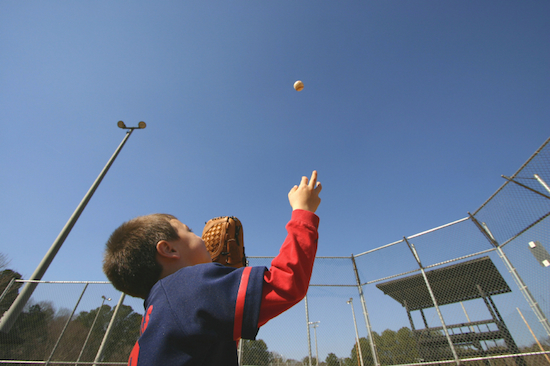Calcium and Vitamin D: Bone Health in Young Athletes
By Dan Peterson, TeamSnap's Sports Science Expert
Let's Start with Some Facts and Statistics
Vitamin D contributes to strong bones in young athletes.
An estimated 50 million children in the U.S. suffer from low Vitamin D Levels.
Low Vitamin D and a poor calcium intake can place athletes at risk for recurrent fractures and stress fractures.
The Importance of Calcium and Vitamin D
Calcium and Vitamin D are both important for strong bones. Many children, especially those who are dairy avoidant, have a diet that is lacking in needed calcium. The body needs calcium for critical body functions. When dietary intake is poor, the body will “steal” the calcium from the bone, thus further contributing to poor bone density over time. Vitamin D helps absorb calcium, so even if calcium intake is good, a child can still be at risk for developing poor bone strength.
 It is important to recognize that children and adolescents are in their prime bone-building years, as peak bone mass is typically achieved by 25 years of age. After that, bone loss gradually occurs naturally with age. Therefore, the “bank” or “reserves” that are achieved by that age will need to sustain the individual throughout life.
It is important to recognize that children and adolescents are in their prime bone-building years, as peak bone mass is typically achieved by 25 years of age. After that, bone loss gradually occurs naturally with age. Therefore, the “bank” or “reserves” that are achieved by that age will need to sustain the individual throughout life.
Vitamin D, also known as the “sunshine vitamin,” is often easy for the body to produce during the summer months. However, because of the fear over adverse effects of sun exposure, sunscreen is applied to the skin, blocking up to 95% of natural Vitamin D. Athletes who train inside year round may be especially at risk for Vitamin D deficiency. During the winter, even in sunny climates, Vitamin D is more difficult to obtain from the sun because of its latitude. Unfortunately, Vitamin D is not readily present in a typical diet, so it is common for Vitamin D levels to significantly decrease in the winter season.
How to Boost Calcium and Vitamin D Levels
Encourage a balanced healthy diet with quality sources of calcium. Children typically need 4-6 servings of calcium rich foods every day. For example, one serving may be a small piece of cheese, a cup of yogurt, or 6 ounces of milk.
 If a child is dairy avoidant, consider calcium fortified food and drinks for calcium servings, such as orange juice, cereals, or almond milk.
If a child is dairy avoidant, consider calcium fortified food and drinks for calcium servings, such as orange juice, cereals, or almond milk.
In the summer, allow short periods of time outside without sunscreen. For example, schedule 15-30 minutes between 10am and 3pm, at least 2 times per week. Dark skinned people require 3-5 times more exposure. Expose most of the skin during this time; wear shorts and a t-shirt. Aim for just enough exposure for the skin to be pink, but not uncomfortable.
When there is concern over the diet or sun exposure to book calcium or Vitamin D, consider giving a dietary supplement. The amount to supplement depends on the age and size of the child. In general, for calcium, give 500-1000mg per day. For Vitamin D, give 400-1000 Units per day. Vit D3 is most commonly recommended.
Screening for Vitamin D deficiency may be considered in the setting of recurrent fractures, stress fractures, or poor healing of bone injury.
NEW! Free Sports Organization Resources
All of TeamSnap's ebooks, articles, and stories in one place. Access Now
Similar Articles:

Just Like Parents, Kids Need to Get Up and Move
By Dan Peterson, TeamSnap's Sports Science Expert …
Read More

The Science of Catching Fly Balls
By Dan Peterson, TeamSnap's Sports Science Expert …
Read More

Calcium and Vitamin D: Bone Health in Young Athletes
By Dan Peterson, TeamSnap's Sports Science Expert …
Read More
